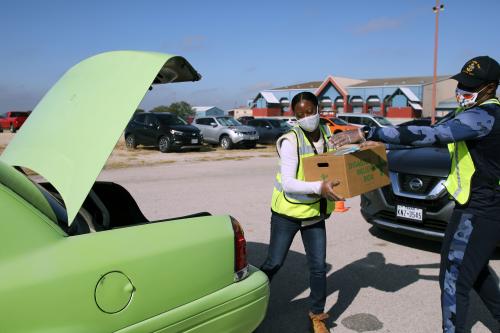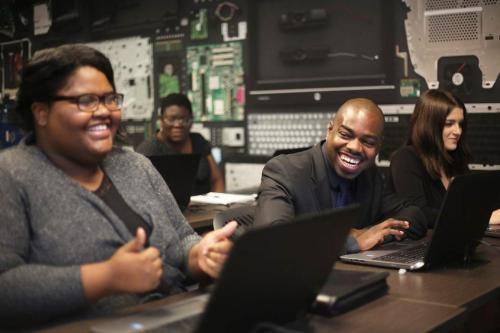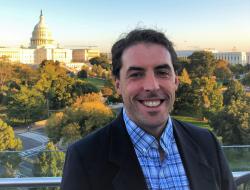In the United States, the long pathway from kindergarten to the job market is an obstacle course that sets up tens of millions of young people for failure, particularly those who are Black or brown. Now, thanks to the COVID-19 pandemic, young people are navigating a disrupted education system or looking for jobs during the third economic downturn in the past 20 years. We need a radically different vision for the transition to adulthood, and we need it now.
From spring 2019 to spring 2020, unemployment among young adults spiked from 8.4% to 24.4%. Even before the pandemic, the youth labor market was in crisis, with the percentage of young people employed or looking for work at historic lows. In 2018, more than 4 million 16- to 24-year-olds were “opportunity youth,” neither in school nor employed. As many as one in three young adults may now fall into this group—over 10 million people.
Meanwhile, our K-12 and postsecondary education systems are deeply stratified by race and class. While high school graduation rates have risen overall, they are lower for Black, Latino or Hispanic, and low-income students. And the K-12 system disproportionately shunts young people of color (especially Black students) into the school-to-prison pipeline, contributing to systemic issues of overpolicing and mass incarceration.
At the postsecondary level, only 60% of students who enroll in a two- or four-year program earn a degree within six years. One book described many students as facing “coin-toss odds of success” once they enroll.
It doesn’t have to be this way.
President-elect Joe Biden—himself a beneficiary of an era of cheap tuition and plentiful jobs—can initiate a new era of opportunity by promising education and employment for all young people.
We propose an Education and Employment Promise for the 2020s, and offer the following components as a starting point:
- Strong bridges between school and work that provide a smooth transition to the job market.
- Affordable postsecondary education and training options that focus on completion, not only enrollment.
- Paid work experiences that build skills and social capital and ensure young peoples’ basic needs are met.
- Evidence-based supports and protections that help young people stay on track.
In implementing these components, we must center racial and gender equity while committing to strong youth-adult partnerships. Our proposal is based on programs that are already successful today and resembles similar mobilizations in the past. There is bipartisan interest in these challenges, and components of the Promise could be launched through a variety of legislative vehicles, such as a major infrastructure bill.
Bridges between school and work
Beginning in middle school, all students should have access to coursework tied to careers and aligned to the economic needs of their area. High schoolers, college students, and young adults neither working nor in school should have access to high-quality work-based learning such as internships, co-ops, and job shadowing.
Numerous high schools and high school networks blend strong academics with a career focus and typically incorporate work-based learning. Other programs specifically prepare and place high school students in professional internships.
For young people not in high school or college, opportunities like AmeriCorps, YouthBuild, and conservation corps provide them the chance to carry out socially beneficial tasks such as tutoring children, building affordable housing, and maintaining public infrastructure. While doing so, they earn a modest living allowance, gain skills, and secure a college scholarship. Other programs combine occupationally specific training with internships, and many specialize in working with young people burdened with barriers like generational poverty. All of these programs allow young adults to gain work experience and build their professional networks.
We must reject the thinking that academic coursework should be separated from occupationally focused education and hands-on experience. A classroom is not the only place where skills can be taught.
Affordable postsecondary and training options
After high school, young people should be able to choose from an array of high-quality, affordable choices for postsecondary education. These include two- or four-year colleges and universities as well as options like apprenticeships, training, or short-term credential programs closely linked to the regional job market.
There are numerous models for improving the dismal graduation rates of many postsecondary offerings. For example, in dual enrollment programs, high school students take college courses, helping them acclimate to college requirements and earn credit toward a degree. There are also reforms within community colleges: the City University of New York’s ASAP program requires community college students to attend full time and provides a range of academic, financial, and personal supports. Multiple community colleges have implemented “guided pathways” reforms, designed to offer clearer sequences of courses in particular fields of study coupled with stronger advising.
Paid work experiences
Early paid work experiences provide opportunities to learn critical work-readiness skills. It also provides income that gives young adults new experiences of independence and allows them to support themselves or family members. The basic ingredients are clear job tasks, some level of responsibility, access to applied learning in a specific industry context, and feedback from supervisors and peers.
Unfortunately, the traditional summer job has all but disappeared, so the federal government should renew its commitment to supporting summer youth employment programs while providing localities that run the programs with incentives to focus on job quality, not only the number of youth placed. And, because young people are more likely to experience poverty and unemployment year-round, we need a long-term commitment to subsidized jobs or other models that help young people get their foot in the door.
Evidence-based supports and protections
The evidence base for integrated student supports is growing, suggesting that education and training programs that address academic and nonacademic student needs are more successful than those that focus solely on academic or technical training.
We need much stronger guidance and advising in high school, postsecondary education, and workforce programs so that young people understand their options for school and the job market, and can then make informed choices. Good advising systems spot early signs of trouble (such as chronic absence) to identify solutions before problems get worse. They also provide supports that make it possible for young people to carry out their plans, which could include mentors, transportation assistance, mental health counseling, and child care. Such supports are typically embedded within schools and programs, or can result from community-wide coordination and collective impact efforts such as the Back on Track initiative.
We also need new protections for young people. Americans have embraced seat belt requirements, tobacco marketing bans, and regulations on payday lenders, but young people do not enjoy similar protections against poor-performing for-profit colleges and predatory school loan providers. They also need protections that still elude many American workers: paid leave, predictable scheduling, comprehensive health care, and retirement benefits.
Employers can also do more: adopting fair hiring practices, targeting opportunity youth for new hires, and instituting race-conscious policies for promotions. The business case for these practices is rock solid, but change can be disruptive, and without new incentives too many employers will remain stuck in old ways.
We have done this before
The country has previously mobilized to meet urgent national and community needs and open educational options to huge swaths of the public. Many Americans know the story of the Civilian Conservation Corps and the Works Progress Administration during the Great Depression, which put millions of people to work modernizing our nation’s infrastructure, upgrading national parks, and creating iconic works of art. Similarly, the GI Bill made college affordable for millions in the decades after World War II. We could launch such mobilizations again, careful to prevent the systemic racial and gender discrimination of these earlier efforts.
Without action, the forces that relegate millions of young adults to the economic margins will only grow worse because of COVID-19. A new president and Congress—buoyed by the urgency of the moment and missed opportunities of the past—can turn the tide with an Education and Employment Promise for the 2020s.








Commentary
Millions of young adults are out of school or work. We need an Education and Employment Promise
December 18, 2020